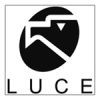National Content: Italy
For a New Europe
| Source | Website www.luce.it |
| Event referred to | March 27th, 1957: Birth of EEC |
| Technological characteristics | Type of file: Video Availability proposed: possibility to view after a free registration To view the video click on the source icon, in the page that opens up just type the code 01521 in the green right column, first white line, then click on the "Invia Ricerca" black button. Then click on the moviefilm like icon of the first record of the list. When asked for use login: projectmhm and password: projectmhm and then click on the "Invia dati" black button. Choose your connection and wait for the video to start. |
| Description of the source | Kind of source: Cine-newsreel Origin of the source: Archive Language: Italian Copyright issues: Is only possible, through a free registration, to view the video |
| Contextualisation of the source | The clip deals with the treaties of Rome, signed on March 25th, 1957: the journalist, who is the Christian Democracy’s voice, talks about the event in terms of an opening of a new era in the history of Europe. |
| Interpretation of the source | In those years the Cine-newsreel was transmitted before each movie in the cinema. There weren’t still so much televisions and analphabetism was still so diffused that not so much people was used to read newspapers. Cine-newsreels were expression of the point of view of the government and usually had an emphatic and propagandistic language. |
| Original Contents | Giungono all’aeroporto di Ciampino il ministro degli Esteri belga Spaak e il suo collega lussemburghese Bech, li ritroveremo al romano Campidoglio insieme ai rappresentanti di Francia, Italia, Germania Occidentale e Olanda, che si accingono a sanzionare l’atto di nascita di quei fondamentali strumenti di una nuova Europa concorde e laboriosa che sono il Mercato Comune e l’Euratom. È giorno di grandi speranze questo, speranze che sarà compito dei figli della vecchia gloriosa Europa tradurre in realtà. Ecco il Capo del Governo olandese Drees, il ministro Spaak, il Cancelliere della Germania Occidentale Adenauer. La cerimonia della firma si svolge nella Sala degli Orazi e Curiazi. Nessun particolare arredamento era stato predisposto, quasi a sottolineare con la disadorna semplicità la solennità del momento. Il sindaco Tupini, porgendo il benvenuto agli ospiti, esprime l’orgoglio di Roma per essere stata scelta a sede del memorabile avvenimento. Adenauer afferma come i due trattati costituiscono una tappa decisiva verso l’unione europea. Prendono successivamente la parola gli altri firmatari. I discorsi vengono tradotti in francese, italiano, tedesco e olandese, le quattro lingue della Comunità europea. Quindi il solenne momento della firma: per la Francia il ministro degli Esteri Pineau e il Segretario di Stato Faure e via via gli altri rappresentanti, due per ogni Nazione. Per l’Italia siglano il documento il Capo del Governo Segni e il ministro degli Esteri Martino. L’ultima firma è apposta esattamente alle ore 18.51 del 25 marzo 1957, un’ora e una data che aprono un nuovo fecondo capitolo della storia d’Europa. |
| Original Contents (English Translation) | The Belgian Minister of Foreign Affairs, Spaak, and his colleague from Luxembourg, Bech, arrive at Ciampino airport, we’ll find them again in Campidoglio, together with the French, Italian, West German and Dutch representatives, who are setting about sanctioning the birth of Common Market and Euratom, basic instruments of a new, laborious and harmonious Europe. This is a day of great hope, a hope that the sons of the old glorious Europe are asked to turn into reality. Here is the Dutch Prime Minister, Dress, Minister Spaak, the West Germany Chancellor Adenauer. The signing ceremony takes place in the “Orazi e Curiazi” room. No particular furniture is prearranged, as to underline, with a bare simplicity, the solemnity of the moment. Major Tupini, welcoming the guests, expresses the pride of Rome of being chosen for this unforgettable happening. Adenauer says that the two treaties represent a decisive step towards the European unification. Then begin to speak the other signatories. Speeches are simultaneously translated in French, Italian, German and Dutch, the four official languages of the European Community. Then is the solemn time of the signature: for France the Minster of Foreign Affairs Pineau and the secretary of State Faure, and so on the other representatives, two for each Nation. For Italy sign the document the Prime Minister Segni and the Minister of Foreign Affairs Martino. The last signature is posed exactly at 6.51 p.m. of March 25th, 1957, a time and a date that open a new prolific chapter in European history. |
